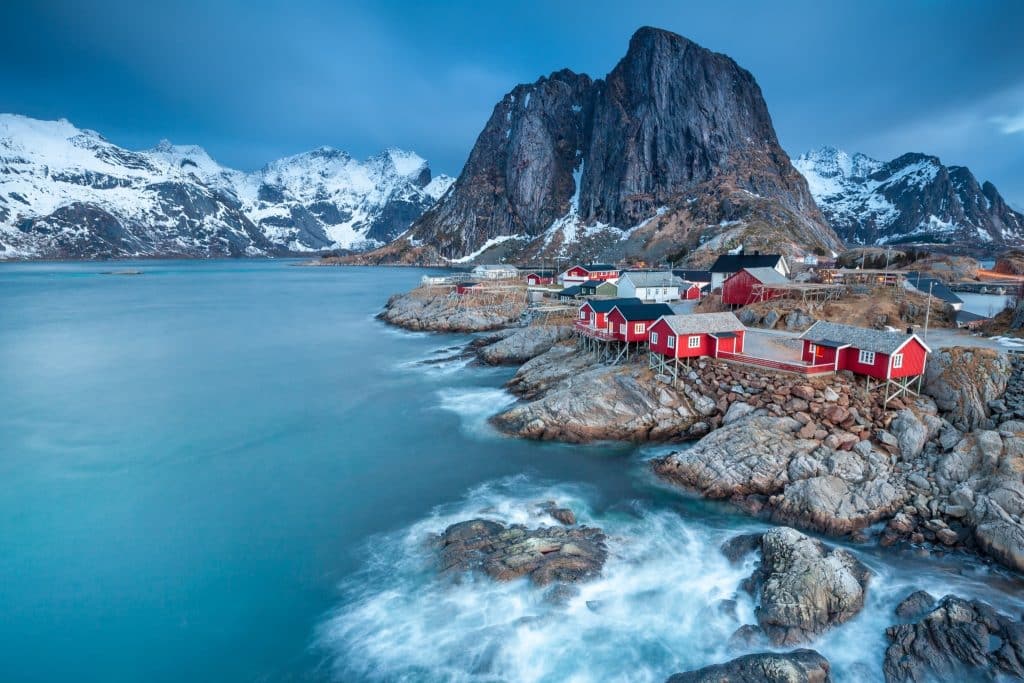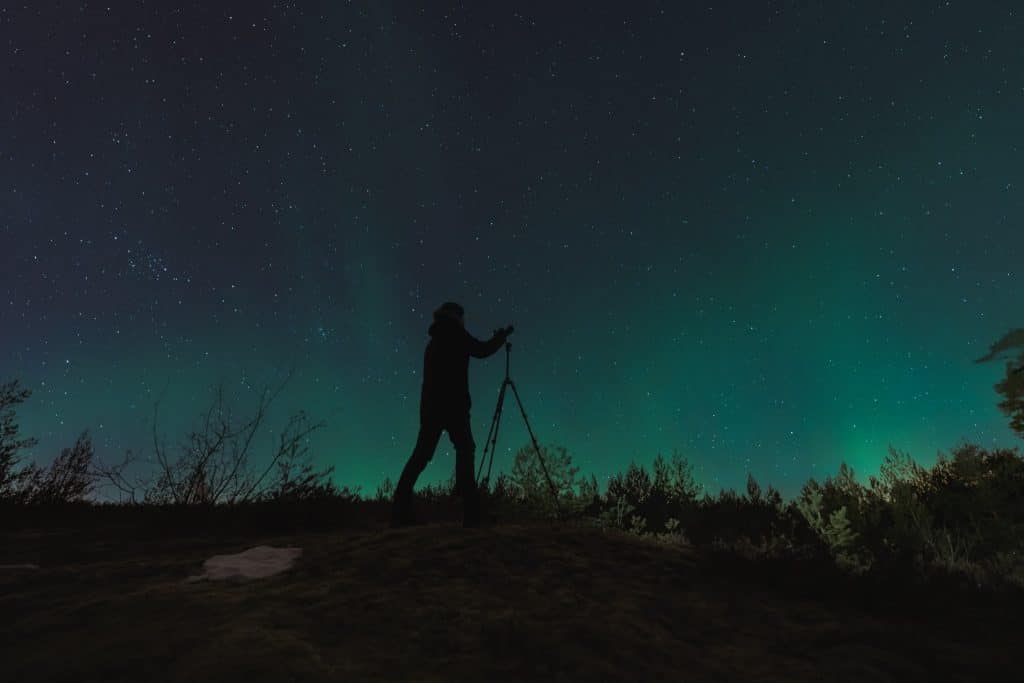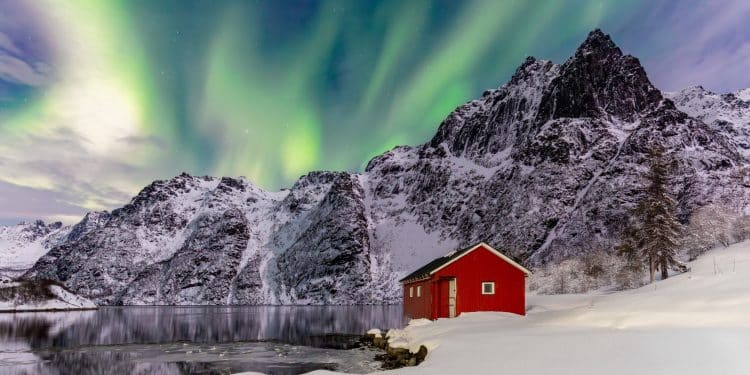If you have dreamed of a raw Arctic trip with dancing lights and empty trails, Lofoten winter travel delivers. In January, February, and March, snow sharpens the granite peaks, the sea turns deep blue, and daylight arrives in short golden bursts. With thoughtful planning, Lofoten winter travel can be simple, safe, and budget-friendly even for first-timers.
This guide lays out routes, cabins, road rules, hikes, and aurora tactics so your Lofoten winter travel feels calm instead of chaotic. You will learn what to pack, how to drive on ice, which short hikes shine in winter light, and how to stack your odds for the northern lights. Use it as a flexible blueprint for Lofoten winter travel that respects weather, saves money, and leaves space for serendipity.
Why go: The special calm of the islands in snow
The same peaks that crowd summer postcards turn wild and quiet in winter. Wind scours the ridgelines, but in the bays around Reine the water can be glassy and still. The crowds thin to almost nothing, and prices soften. That quiet makes Lofoten winter travel perfect for reflective trips, couples’ escapes, or creative resets. Expect short daylight, robust weather, and starry nights that can burst into color. When you plan Lofoten winter travel, you’re choosing a season where patience and flexibility reward you more than any checklist.
When to go: Daylight, moonlight, and the best months
For most visitors, mid-January through mid-March is the sweet spot. By late January, you get real daylight windows for hiking; by March, days feel generous yet nights are still long enough for aurora. New moon weeks help the sky stay dark; full moons add silver light for night snow walks and coastal scenes. Either way works for Lofoten winter travel, but your style matters—photographers often prefer new moon, while hikers who like night ambience enjoy a bright moon. Aim for 5–7 nights so your Lofoten winter travel has multiple weather chances.
Getting there and around
Fly into Evenes (Harstad/Narvik) or Bodø, then connect by bus or rent a car. A rental gives you the most control for Lofoten winter travel. The E10 is your spine from Svolvær down to Å. It is generally plowed quickly, but side roads glaze over, especially near Reine, Hamnøy, and Sakrisøy. Carry time buffers; weather can pause driving for hours. If you do not drive, buses run, but service is sparse on weekends; build slack into your Lofoten winter travel itinerary.
Pro tip: If you land in a storm, hole up in Svolvær or Leknes for a night and let the plows work. Your safety—not your schedule—sets the pace of Lofoten winter travel.
Weather reality: What “Arctic” actually feels like
Air temps often hover between −5°C and +3°C along the coast. Wind is the wildcard. A “mild” forecast with heavy gusts can feel brutal, while a still night at −8°C can be pleasant. Pack like it will be colder than numbers show. For Lofoten winter travel, think in systems:
- Base: merino top and bottom you can sleep in.
- Mid: fleece or active insulator that breathes on climbs.
- Shell: waterproof jacket and pants that cut wind.
- Extras: down parka for stops; liner gloves under waterproof mitts; balaclava or buff; microspikes; headlamp with spare batteries.
These layers keep Lofoten winter travel comfortable—even on windy harbor walks or ridge viewpoints.
Aurora 101: How to stack the odds
You do not need high KP numbers. You need clear gaps in the clouds and darkness in your frame. For Lofoten winter travel, the winning routine is simple: nap early, check the sky often, and be ready to move 10–20 minutes to dodge cloud bands. Some classic pull-offs: Skagsanden Beach, Hamnøy bridge area, Reine harbor, Uttakleiv and Haukland pair, and Flakstad. If it is partly cloudy, shoot reflections and let the gaps tell the story. If it is windy, use your car as a warm base. Your best aurora photo may come in a five-minute burst—Lofoten winter travel rewards patience.
The best short winter hikes (safe, scenic, and realistic)
Winter changes difficulty. Choose routes with modest exposure and obvious lines:
- Unstad coastal path (easy): A rolling shoreline walk with surf views. Great for the first morning of Lofoten winter travel.
- Haukland to Uttakleiv via the road/col (easy-moderate): Park at Haukland, climb the old road toward the pass. Wide path; bring microspikes.
- Offersøykammen (moderate): A small summit with 360° views near Leknes. If wind screams, save it; edges can cornice.
- Ryten from Kvalvika side (moderate): Shorten the classic by starting late and turning around at your comfort. Do not approach cliff edges if snow hides cornices.
If weather shuts down hiking, walk beaches—Skagsanden, Haukland, Ramberg—and let Lofoten winter travel be about light, not summits.
Safety basics you should actually use
- Track daylight exactly; set phone alarms for sunset minus 90 minutes.
- Microspikes live in your pocket; put them on before you slip, not after.
- Small thermos, hot drink, and a high-calorie snack per person—non-negotiable for Lofoten winter travel.
- Download offline maps; cell service drops in coves.
- If a trail feels exposed, turn around. There is no prize for pushing in winter.
Rorbu cabins: Sleep on the sea
Rorbu are restored fishermen’s cabins built on stilts, often painted red or yellow. In winter, they become cozy bases with heaters, drying racks, and kitchenettes perfect for Lofoten winter travel. Book clusters around Reine, Hamnøy, Sakrisøy, or Nusfjord for postcard views within steps of your door. Ask about parking, on-site snow clearing, and whether the cabin has heated bathroom floors—a small luxury after a sleet walk. If you shoot aurora, choose a deck facing north or northwest. That single detail can double your Lofoten winter travel photo chances.

Driving in snow and on ice
Studded winter tires are standard. Drive like the road is tricking you, because it is. The glaze that looks wet may be black ice. Brake early and gently; keep extra distance; coast into turns. When a gust hits a bridge, hands steady—not tight. Keep a small shovel, traction mats, and a tow strap in the trunk. Locals will often help, but self-recovery saves time during Lofoten winter travel storms.
Food, groceries, and warm stops
You will find Coop and Rema 1000 supermarkets in Svolvær, Leknes, and smaller hubs. Stock up every other day, and plan one warm meal out when the weather pins you down. Fishermen’s soups and cinnamon buns are morale devices in Lofoten winter travel. Cafés may keep shorter hours; check times in the morning and call if you can.
What a 7-day plan can look like
Use this as a flexible sketch; swap days as weather shifts.
Day 1 – Svolvær arrival: Get winter tires, pick up microspikes, and walk the harbor. Early night aurora scout. Call this your “soft start” to Lofoten winter travel.
Day 2 – Henningsvær & beaches: Morning in Henningsvær’s lanes, then Gimsøy’s flat light. Sunset at Uttakleiv. Night window for aurora at Haukland.
Day 3 – Leknes hikes: Offersøykammen if wind is tame. Backup: Ramberg beach and Flakstad church area. Keep your Lofoten winter travel pace slow; daylight is strategy.
Day 4 – Reine triangle: Move to Reine/Hamnøy/Sakrisøy. Short shoreline walks, golden hour at Reinebringen viewpoint area (do not climb icy steps). Night shots from bridges if winds allow.
Day 5 – Nusfjord & Skagsanden: Fisher village stroll, then Skagsanden for long-exposure waves. This is classic Lofoten winter travel—soft snow, blue hour, and green bands over the surf.
Day 6 – Flex day: Hold for the best forecast—repeat your favorite beach, drive to Å, or book a sauna session with a sea dip if conditions are safe.
Day 7 – Exit buffer: Keep half a day for storms or slow roads. Your final Lofoten winter travel memory might be a quiet walk through snow squalls.
Budget tips that genuinely work
Norway has a reputation for costs, but you can keep Lofoten winter travel sensible:
- Travel with two or three people and split a rorbu.
- Cook most dinners; eat out at lunch prices when you do.
- Book cars early; filter for unlimited mileage and winter tires.
- Carry a thermos to avoid constant café stops.
- Choose one paid “treat” (sauna, boat tour) rather than many small extras.
For more money-smart ideas, explore the On a Budget section for strategies you can adapt to your Lofoten winter travel plan.
Practical travel hacks for the Arctic edge
A few simple habits make Lofoten winter travel smoother:
- Pack two headlamps; cold kills batteries fast.
- Use zipper bags to stage layers by activity; no rummaging in wind.
- Keep a small microfiber towel to dry camera gear and phones.
- Carry a compact ice scraper for your windshield and mirrors.
- Park facing out; easier exits in snow.
You can dig into more habits that save time and stress in Travel Hacks and apply them directly to your Lofoten winter travel routine.
Where to base yourself
Split your stay between two hubs to cut driving:
- Svolvær/Leknes area (first 3–4 nights): Access to Henningsvær, Uttakleiv/Haukland, Offersøykammen.
- Reine/Hamnøy/Sakrisøy area (last 3–4 nights): Signature bridge views, Skagsanden, Nusfjord, Å.
This two-base approach keeps Lofoten winter travel relaxed and minimizes storm-day risks.
Photography tips for cold, wind, and sea spray
- Keep one lens on to avoid changing in spindrift.
- Use manual focus on bright stars or a distant light.
- Start at ISO 1600–3200, f/2.8–f/4, 4–8 seconds for aurora; adjust as it brightens.
- For moving waves, try 0.5–1 second with a strong tripod.
- Tape your tripod’s leg locks to reduce ice freeze.
The secret to Lofoten winter travel photography is patience: stay parked on one composition and let the sky evolve.
Respect the place: weather, locals, and nature
Lofoten villages are small. Drive slowly past homes, don’t block tiny lots, and pack out everything. In storms, locals may be clearing roads for hours; give plows space. Choose marked parking, not soft shoulders that collapse into ditches. Responsible habits make Lofoten winter travel welcome.

Digital nomad notes (if you bring work)
If you must work on the road, pick cabins with proven Wi-Fi and mobile backup. Expect occasional drops in heavy weather. Use offline tools and sync during café breaks. Keep work windows in the dim midday and chase aurora at night—that’s the natural rhythm of Lofoten winter travel. For more destination ideas with workable routines, browse Digital Nomad and adapt the advice to Arctic conditions.
A sense of scale: what not to attempt
Some famous summer lines are simply not winter routes for visitors: Kvalvika beach from steep forest paths after heavy snow, exposed ridges with cornices, and icy staircases like Reinebringen. None of those are “musts” for Lofoten winter travel. Beaches, road overlooks, and short col walks give you huge returns for little risk.
Packing list you can copy
- Passport, license, and reservation screenshots.
- Insulation system listed earlier.
- Microspikes, gaiters, and warm socks for Lofoten winter travel days.
- Thermos, snacks, first aid, emergency blanket.
- Camera kit and spare batteries in an inner pocket.
- Reusable grocery bag; little stores charge for extras.
- Swimsuit if you plan sauna dips; towel and sandals.
Lay it all out once; you will repeat the same kit each Lofoten winter travel day with small tweaks.
Sample costs (rough ranges)
- Rorbu cabin for two: €110–€180 per night in winter specials.
- Car hire with winter tires: €60–€90 per day.
- Groceries: €10–€15 per person per day if cooking.
- Café stop: €6–€12 for pastry and coffee.
- Sauna session: €20–€35.
These are averages; storm days may add one extra night. Budget buffers are part of Lofoten winter travel reality.
How to read the forecast like a local
Check the regional forecast, then look at satellite cloud maps and wind. If the wind swings north and drops after a storm, prepare for clarity and aurora. If a warm front brings wet snow, choose low beach walks. Flexibility makes Lofoten winter travel better than any fixed checklist.
Itineraries for different traveler styles
- The Photographer: Sleep late, scout compositions at noon, nap, then two aurora windows (21:00 and 00:30). Lofoten winter travel is about chasing light, not steps.
- The Hiker: One short summit on calm days, coastal loops on windy days. Keep descents before blue hour.
- The Relaxer: Slow mornings, village cafés, sauna after sunset, casual aurora from the cabin deck. A cozy version of Lofoten winter travel.
Booking strategy
Reserve cancellable stays and a car early, then leave two nights open in the middle to bend with weather. Book your “treat” (sauna or boat) on your best-weather day, but hold the right to move it. This flexible approach is the secret engine of smooth Lofoten winter travel.
Useful bases and names to plug into your map
Svolvær, Henningsvær, Leknes, Ramberg, Flakstad, Reine, Hamnøy, Sakrisøy, Nusfjord, and Å. Star them now; they will become the backbone of your Lofoten winter travel plan.
If Arctic islands call to you, add Lofoten to a list of places where winter unlocks a calmer version of world-class scenery. See more inspiration in Epic Destinations and keep refining your Lofoten winter travel wish list by comparison.
What to do if weather cancels everything (it happens)
Turn storm days into atmosphere days. Photograph harbor lights through snow. Read in a café, then cook soup in your rorbu. Sort and edit photos. Take a short harbor walk at blue hour, then check the sky every hour until midnight. Lofoten winter travel rewards patience; storms are part of the story.
Staying healthy and happy in the cold
Hydrate more than you think; cold air is drying. Snack often. Keep feet dry with spare socks. Change into dry layers as soon as you finish a walk. Small rituals keep Lofoten winter travel joyful rather than tiring.
Leaving no trace in winter conditions
Snow hides litter; that makes it extra important to pack out everything. Use toilets before trailheads. Stick to durable surfaces where vegetation is thin under snow. Wild animals have tight winter margins—observe from distance. Respect turns Lofoten winter travel into a gift to the next traveler.

The wrap-up: Design the trip around weather, not your wishlist
The secret is to let the forecast lead. Choose two hubs, keep days short, stack aurora chances, and carry simple gear that truly works. When crowds are gone and fjords breathe steam into cold air, Lofoten winter travel becomes the kind of trip that changes how you think about seasons. Plan lightly, move slowly, and give luck room to find you. That is how Lofoten winter travel becomes your favorite winter story.
For ongoing ideas across budgets, hacks, and destinations, keep browsing Viral Voyage. Use those insights to level up your Lofoten winter travel planning, from packing to photo timing.



